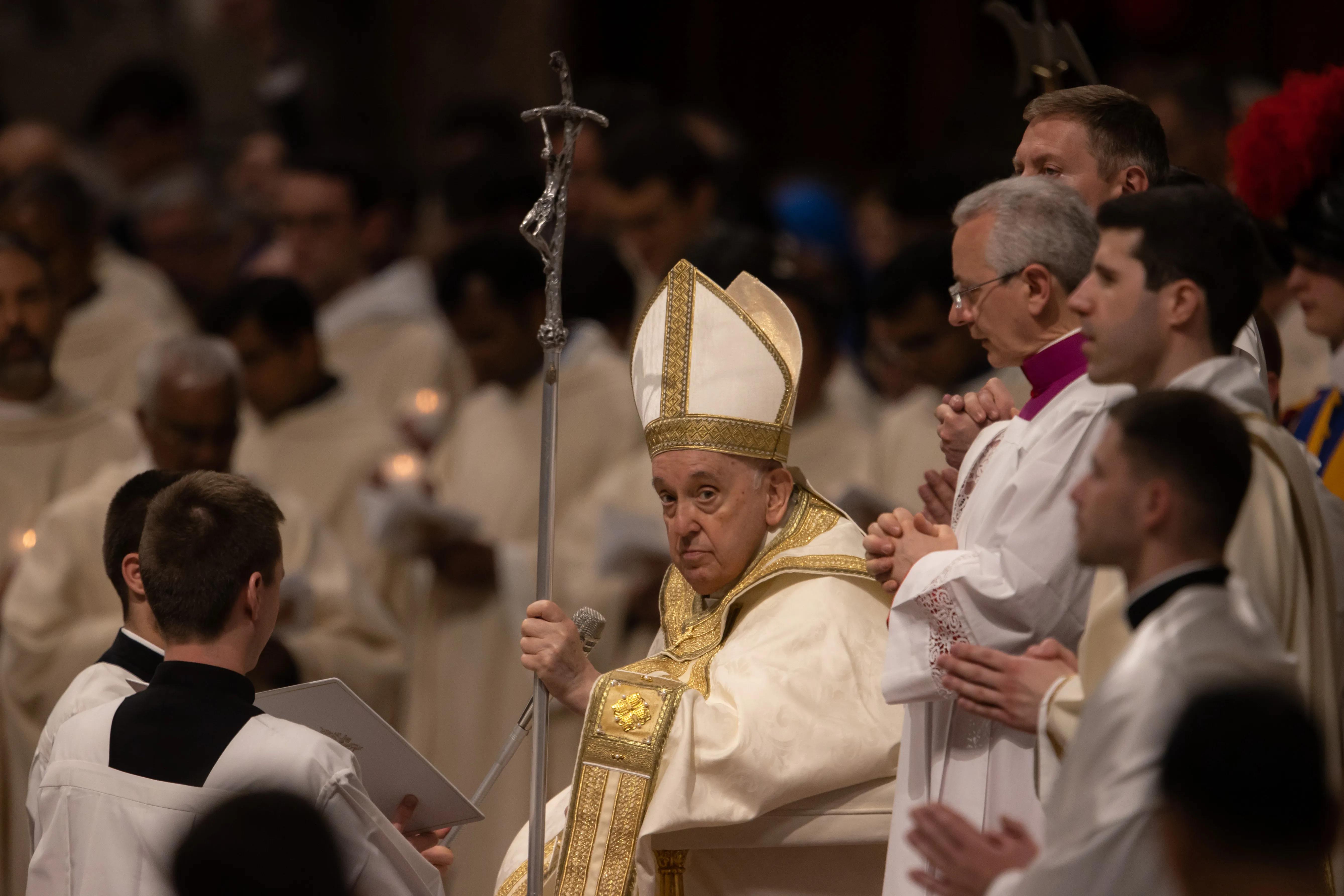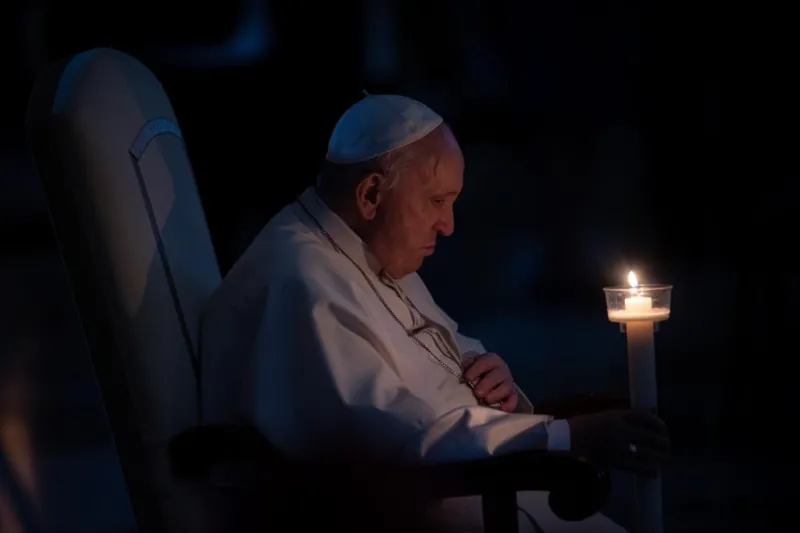
Pope Francis at Easter Vigil: ‘Rediscover the grace of God’s resurrection within you’
 Pope Francis gives his homily at the Easter Vigil Mass in St. Peter’s Basilica on April 8, 2023. / Daniel Ibanez/CNA
Pope Francis gives his homily at the Easter Vigil Mass in St. Peter’s Basilica on April 8, 2023. / Daniel Ibanez/CNA
Vatican City, Apr 8, 2023 / 13:40 pm (CNA).
At the Vatican’s Easter Vigil Mass, Pope Francis urged people to “roll away the stones of sin and fear” to experience the power of Christ’s resurrection.
In his Easter homily on April 8, the pope issued an invitation to “rediscover the grace of God’s resurrection within you!”
“Today, brothers and sisters, the power of Easter summons you to roll away every stone of disappointment and mistrust. The Lord is an expert in rolling back the stones of sin and fear … return to Him,” he said in St. Peter’s Basilica.
“Look with confidence to the future,” he said. “For Christ is risen and has changed the direction of history.”
The Easter Vigil, which takes place on Holy Saturday night, “is the greatest and most noble of all solemnities,” according to the Roman Missal.
The liturgy began in darkness with the blessing of the new fire and the preparation of the Paschal Candle. The candle symbolizes the light of Christ, which “shines in the darkness” that “has not overcome it” (John 1:5).

Pope Francis arrived at the basilica in a wheelchair dressed in white and gold vestments. He presided over the vigil Mass from a white chair placed at the side of the main altar in the presence of 8,000 people.
Forty cardinals, 25 bishops, and about 200 priests processed through the dark church carrying lit candles to signify the light of Christ coming to dispel the darkness.
At the beginning of the liturgy, a cantor sang the Exsultet Easter Proclamation, which tells the story of salvation from the creation, the testing and fall of Adam, the liberation of the people of Israel from slavery in Egypt, and culminates in Jesus Christ, who died for our sins and leads us to salvation.
The basilica was lit up gradually until it was fully illuminated at the Gloria, when the bells of St. Peter’s tolled.

In his homily, Pope Francis asked people to remember the place where they came to know Jesus personally and to interiorly “return to that first encounter.”
“Remember that powerful experience of the Holy Spirit; that great joy of forgiveness experienced after that one confession; that intense and unforgettable moment of prayer; that light that was kindled within you and changed your life; that encounter, that pilgrimage,” he said.
“Each of us knows the place of his or her interior resurrection, that beginning and foundation, the place where things changed. We cannot leave this in the past; the Risen Lord invites us to return there to celebrate Easter.”

During the Easter Vigil Mass, Pope Francis baptized eight people from the United States of America, Nigeria, Albania, Italy, and Venezuela.
The congregation prayed the Litany of the Saints and renewed their baptismal promises as the candidates prepared to be received fully into the Catholic Church.
Pope Francis recalled the sorrow that the disciples must have experienced when Jesus’ tomb was sealed with a stone. He noted that there are also “sealed tombs” in the present, like the “tombs of disappointment, bitterness and distrust, of the dismay of thinking that ‘nothing more can be done,’ ‘things will never change,’ ‘better to live for today,’ since ‘there is no certainty about tomorrow.’”

“At times, we may simply feel weary about our daily routine, tired of taking risks in a cold, hard world where only the clever and the strong seem to get ahead,” he said.
“At other times, we may feel helpless and discouraged before the power of evil, the conflicts that tear relationships apart, the attitudes of calculation and indifference that seem to prevail in society, the cancer of corruption– there’s a lot –the spread of injustice, the icy winds of war.”
In these moments of discouragement, Christ’s resurrection “motivates us to move forward,” he said, “and to leave behind our sense of defeat, to roll away the stone of the tombs in which we often imprison our hope.”
“Dear brothers and sisters, let us follow Jesus to Galilee, encounter him and worship him there, where he is waiting for each of us. Let us revive the beauty of that moment when we realized that he is alive and we made him the Lord of our lives. … Let us rise to new life!” the pope said.
Pope Francis is also scheduled to preside over Mass on Easter Sunday morning in St. Peter’s Square, after which he will give the traditional “Urbi et Orbi” blessing.



